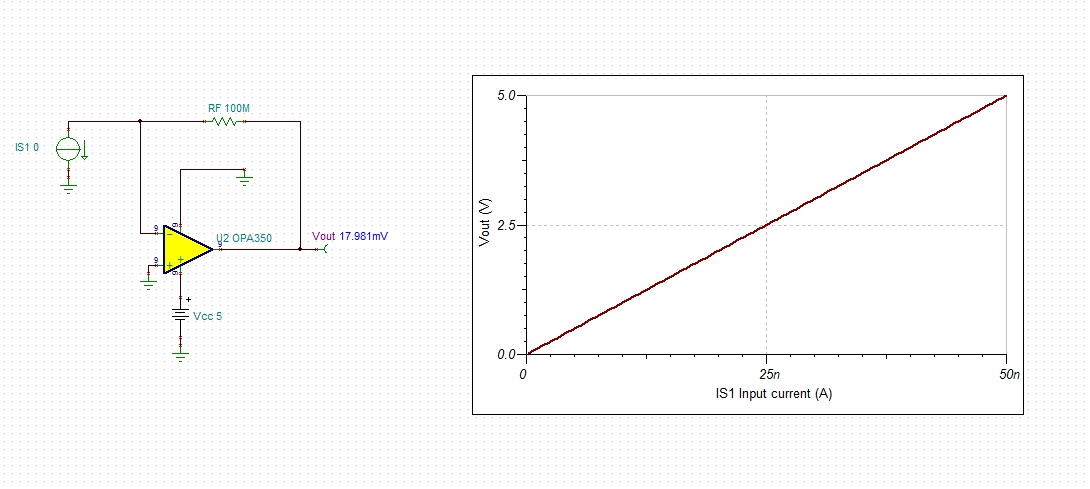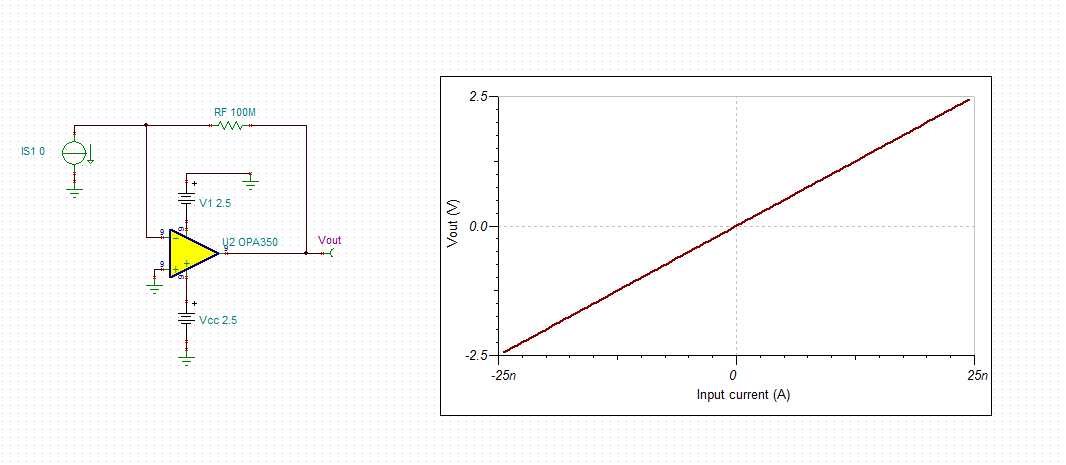Hello all,
I am trying to use the OPA350PA and take advantage of its low input bias current to amplify a small signal of around a nA of current. I have it set up in a simple negative feedback loop with a resistance value of 100 mega ohms. The output current from this configuration shows a linear relationship with the input current. The input signal is around 0.2V and 2nA and the output current is around 0.12mA. I have not been able to find a reliable way to test if the voltage out of the OPA350 varies with the input current (the input voltage varies with the input current). I need to feed the output through a buffer and into an analog to digital converter to take measurements so I need the output voltage to vary with the input current. Does this op amps voltage vary with small signal changes on the order of 1nA of current? Is there anyway I can measure the output voltage without changing the characteristics of the circuit?




